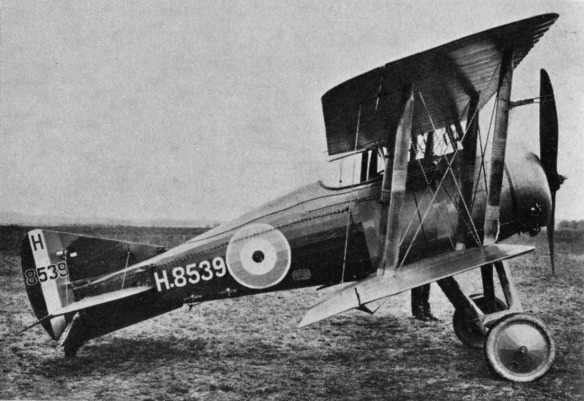The Nightjar was a British carrier based fighter aircraft of the early 1920s. It was a modification of the earlier Nieuport Nighthawk fighter produced by Gloster after the Nieuport & General Company, who designed the Nighthawk closed down. 22 were converted, serving with the British Royal Air Force from 1922 to 1924.
The Nieuport Nighthawk, designed by H P Folland in 1918, was powered by a 340-hp ABC Dragonfly engine which gave considerable trouble with overheating and vibration. Most of the Nighthawks built were converted or used for experimental flying in the 1920s.
The Nighthawk, designed in 1918 by H P Folland for Nieuport & General Aircraft, the British subsidiary of the French Nieuport company, was the first British fighter built for the RAF to be powered by a stationary radial, rather than a rotary engine. Unfortunately, the engine was the ABC Dragonfly, a nine-cylinder radial for which remarkable power and lightness were claimed; as it turned out, the promised 340 hp was never achieved, and cooling and vibration problems rendered it something of a disaster. The aircraft itself was an equal-span two-bay biplane with ailerons on both wings and a tail fin extending below the tapering fuselage; armament was to be two synchronized Vickers machine-guns.
Production orders were placed with both Nieuport and the Gloucestershire (Gloster) Aircraft Company before it had flown, and the three prototypes demonstrated excellent flying qualities. However, the cancellation of the Dragonfly programme brought production to a halt when only a few Nighthawks had been completed. Some continued to be used for experimental flying; two were modified as Nieuhawk sporting aircraft; and others were converted by Gloster as civil Goshawks and the successful Mars I racer. Later Gloster conversions included 50 Sparrow hawks powered by 230-hp Bentley B. R. 2 engines supplied to the Japanese navy in 1921-22 and a small number of Nighthawks (alternatively called Mars VI) with 385-hp Bristol Jupiter III or 325-hp Armstrong Siddeley Jaguar II or III engines used for experimental purposes by the RAF in Iraq. Twenty-five of the Jaguar II-powered version were delivered to the Greek air force, and 22 Mars X/Nightjars with B. R. 2 engines went to the RAF as shipborne fighters.
Variants
Nieuport Nighthawk
Original production version. Powered by 320 ABC Dragonfly engine.
Nieuport L.C.1.
Civil version, appearing in both single and two-seater configurations.
Nieuport Goshawk.
Civil version, one completed as an air racer.
Gloster Bamel (Mars 1)
Racing derivative of Nighthawk. Powered by 450 hp Napier Lion engine. One built
Gloster 1
Rebuild of Mars 1 with more powerful engine and smaller wing.
Gloster Sparrowhawk (Mars II, III and IV)
Main article: Gloster Sparrowhawk
Naval fighter for Japan.
Gloster Grouse (I and II)
Nighthawk conversion to a sesquiplane, equipped with 185 hp Siddeley Lynx
Gloster Nighthawk (Mars VI)
Rebuild of Nighthawk with Jaguar II or Jupiter III engine.
Nieuport Nightjar (Mars X)
Main article: Nieuport Nightjar
Naval fighter for RAF, equipped with a 230 hp Bentley B.R. 2.
